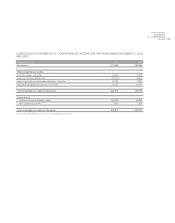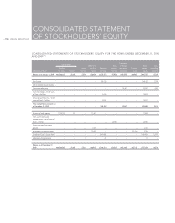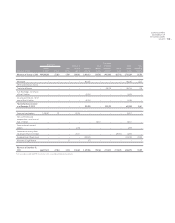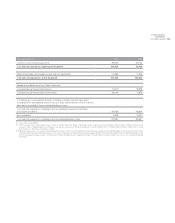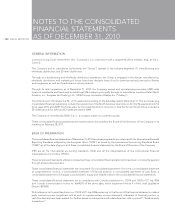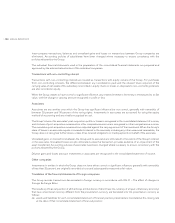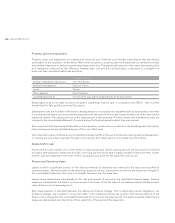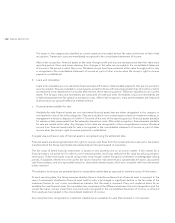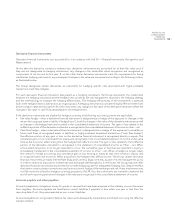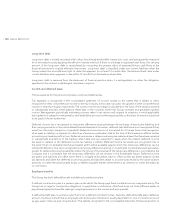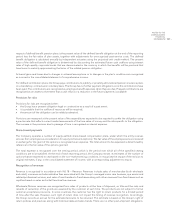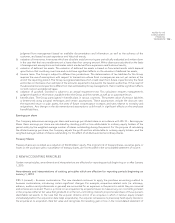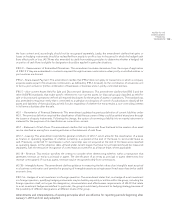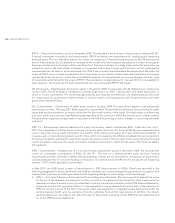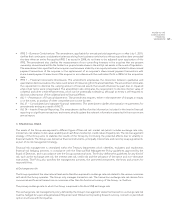LensCrafters 2010 Annual Report Download - page 129
Download and view the complete annual report
Please find page 129 of the 2010 LensCrafters annual report below. You can navigate through the pages in the report by either clicking on the pages listed below, or by using the keyword search tool below to find specific information within the annual report.|127 >
NOTES TO THE
CONSOLIDATED
FINANCIAL
STATEMENTS
Intangible assets
(a) Goodwill
Goodwill represents the excess of the cost of an acquisition over the fair value of the Group’s share of the net identifiable
assets of the acquired subsidiary at the date of acquisition. Goodwill is tested at least annually for impairment and
carried at cost less accumulated impairment losses. Impairment losses on goodwill are not reversed. Gains and losses
on the disposal of an entity include the carrying amount of goodwill relating to the entity sold.
(b) Trademarks and other intangible assets
Separately acquired trademarks and licenses are shown at historical cost. Trademarks, licenses and other intangible
assets, including distribution networks and franchisee agreements, acquired in a business combination are recognized
at fair value at the acquisition date. Trademarks and licenses have a finite useful life and are carried at cost less
accumulated amortization and accumulated impairment losses. Amortization is calculated using the straight–line
method to allocate the cost of trademarks and licenses over their estimated useful lives.
Contractual customer relationships acquired in a business combination are recognized at fair value at the acquisition
date. The contractual customer relations have a finite useful life and are carried at cost less accumulated amortization
and accumulated impairment losses. Amortization is recognized over the expected life of the customer relationship.
All intangible assets are subject to impairment tests, as required by IAS 36 – Impairment of Assets, if there are indications
that the assets may be impaired.
Impairment of assets
Intangible assets with an indefinite useful life for example goodwill, are not subject to amortization and are tested at least
annually for impairment.
Intangible assets with a definite useful life are subject to amortization and are reviewed for impairment whenever events or
changes in circumstances indicate that the carrying amount may not be recoverable. An impairment loss is recognized for
the amount by which the asset’s carrying amount exceeds its recoverable amount. The recoverable amount is the higher
of an asset’s fair value less costs to sell and value in use. For the purposes of assessing impairment, intangible assets are
grouped at the lowest levels for which there are separately identifiable cash flows (cash–generating units). Intangible
assets other than goodwill are reviewed at each reporting date to assess whether there is an indication that an impairment
loss recognized in prior periods may no longer exist or has decreased. If such an indication exists, the loss is reversed and
the carrying amount of the asset is increased to its recoverable amount which may not exceed the carrying amount which
would have been determined if no impairment loss had been recorded. The reversal of an impairment loss is recorded in
the consolidated statement of income.
Financial assets
The financial assets of the Group fall into the following categories:
a. Financial assets at fair value through profit and loss
Financial assets at fair value through profit or loss are financial assets held for trading. A financial asset is classified
in this category if acquired principally for the purpose of selling in the short term. Derivatives are also categorized as
held for trading unless they are designated as hedges. Assets in this category are classified as current assets. In this
case, the subsequent fair value changes are recorded based on specific criteria. For further information, refer to the
paragraph, “Derivative financial instruments”.


